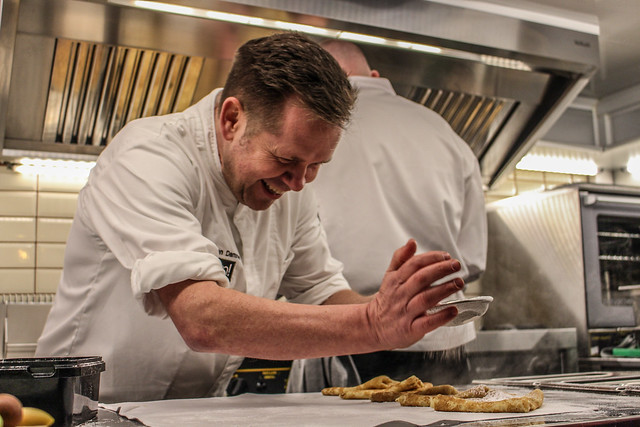Unlock the Magic in Your Story Now
Get the Free 20 questions to Ask Before Launching Your Idea workbook when you sign up for occasional updates.
Get the Free 20 questions to Ask Before Launching Your Idea workbook when you sign up for occasional updates.
How Good Is Your Story?
filed in Story Skills, Storytelling

There’s a reason why this post about how to write a compelling about page is the most visited page on my website and has been since I wrote it almost eight years ago. It’s an ironic and universal truth, that the story we know best is the story we have the least confidence telling—at least when we sit down to write.
We fear saying the thing that nobody cares to listen to. But our fear of saying things that people hear and reject is even greater. So we play it safe and end up looking and sounding like everyone else. It’s not that we can’t tell better stories. It’s that we resist doing it for fear of not being good enough, or worse, right enough.
What’s the difference between a good story and a great story?
A good story tells.
A great story engages.
A good story informs.
A great story moves people.
A good story chronicles events.
A great story invests people in the outcome.
A good story changes how we think.
A great story changes how we feel and what we do.
You already have a good story to tell. It’s how you tell it that makes it great.
Image by x1klima
Share this article
Better Work Happens By Design
filed in Success

My parents both left school in their early teens. They and most of their peers were manual labourers, who didn’t get to choose the kind of work they did. They worked in factories or on building sites for most of their lives. Work for them was a means to an end—a way to contribute to providing for their families.
Today, most of us are luckier than we realise. Even if we’re not in our ideal job, we often have the flexibility to be creative, choose our customers or design our day. And yet we rarely do it with intention. We don’t take the time to question what we want. Answering the following questions might help you to change that.
Better Work Questions
1. What brings you joy?
2. What does a good day look like?
3. Who is your best work for?
4. Who is your best work not for?
5. What opportunities are you grateful for?
6. What kind of projects will you always say yes to?
7. What kind of projects will you always say no to?
We do more of the work we’re proud of by understanding why it matters, both to us and the people we serve.
*For stories of people doing their best work, and some compelling storytelling check out the Netflix Street Food series.
Image by Krista
Share this article
Try Anyway

Texas head teacher, Belinda George, doesn’t have access to more resources than her colleagues. So how does she change her students’ lives for the better? Instead of focusing on the things she and her team can’t control, like educational policy and budgets, she concentrates on the things she can influence.
Ms George is then free to show up as herself, own her story and ask; what can I do to make things better? Her goal is to bridge the gap between school and home, deepening the school’s relationships with the children and their families.
The result is ‘Tucked-in Tuesdays’—a weekly bedtime story reading broadcast to her ‘scholars’ via Facebook live. Belinda George didn’t wait for the data to tell her what she already knew in her heart was the right thing to do.
Too often we get caught up looking for certainty about a likely outcome before being willing to try. Many breakthrough innovations and life-changing initiatives were brought about by people who didn’t know for sure, but who tried anyway.
Go ahead, try anyway. What have you got to lose? Or even better, what does the world stand to gain because you did?
Image by Austin Public Library
Share this article
Everyone Speaks

If you search ‘best breakfast in Hobart’ on Trip Advisor, you’ll find a tiny, backstreet cafe in the number one spot. This cafe opens for six hours each day, only seats a dozen people and has a queue of eager diners waiting outside before it opens. It’s the kind of place the people who visit go out of their way to find.
What’s the big draw? The cafe is designed so diners can sit at the bench and interact with the chef while he cooks their delicious breakfast. People are not just going to eat amazing food. They’re coming for the theatre and the feeling of intimacy.
The chef is the star of the show. But it’s not just the chef’s performance that matters. How every member of the team welcomes and serves people makes or breaks the experience. Everyone’s actions speak for the brand. So when the waitstaff don’t smile or scold diners for moving into their workspace, it breaks the spell and kills the magic.
Everyone, no matter how visible, who has a hand in creating the customer experience, speaks for your brand. It isn’t only the star of the show who tells the story.
Image by Marchaud Wittouck
Share this article
Sweeping The Floor
filed in Strategy

One of my first jobs was in the hospitality industry. We worked long hours, weekends and holidays for average pay. Staff turnover was high. It was hard for managers to motivate people. One of our best managers didn’t bark orders about smiling at customers or showing up on time. She led by example.
The first thing Paula did when she arrived every morning was sweep the floor. Sweeping the floor became a ritual—her way of preparing a welcome for customers when they arrived. That small act changed Paula’s posture, as well as the attitude of the team who worked with her.
When we sweep the floor we’re not only showing our customers that we care about their experience, we’re reinforcing our values to ourselves and others. Paula believed serving customers was a privilege, not a chore. She showed us that while we couldn’t always choose our working conditions, we could always choose our attitude.
Sweeping the floor rarely counts as a core business activity—not in the way buttering the bread, speaking to customers and taking the money does. But when we care, our customers know. They don’t just see it in how well the product or service works—they sense it in everything we do.
Image by Ruby
Share this article
Efficiency Vs. Meaning

Mike’s been driving for Uber for three years. In that time he’s done 20,000 trips while maintaining a consistent 4.94-star rating. Mike works when he wants to. He’s earning more than enough money to pay the bills, and yet he can’t help feeling there’s something missing.
Mike is a phenomenally successful Uber driver by any measure, and yet he doesn’t feel successful. Despite his best efforts and his stellar record Uber doesn’t differentiate him from any other driver. And he knows most of his passengers don’t either.
In the industrial age, factory owners prioritised efficiency above meaning. In our technological age, some still do. But as workers, we do the reverse. We don’t want to be anonymous robots.
When we’re no longer part of the assembly line, we are responsible for our effort, and how much to care, or not to care. The fruit of our labour becomes about more than the exchange of time for money. Work is no longer transactional. For people like you, me and Mike, that means choosing to do the work that gives us that meaning, for the people who find it meaningful.
Image by Roger W
Share this article
On Culture
filed in Storytelling, Strategy

Culture is how we act, based on what we know about who we are.
It isn’t about fitting in, it’s about understanding where we belong and why.
Culture is a reminder that if we believe this, then we do or don’t do, that.
It’s about saying this is who we are, then living up to that ideal.
The leader’s job isn’t to tell us what to do.
It’s to remind us who we are, so we can live that story.
Image by Michael Dawes
Share this article
Fabled Or Found?
filed in Marketing, Storytelling

Every week, my favourite bookstore restocks the shelves at the front of the store with new releases. And every time I go there, I think the same thing. What are the chances of any book—no matter how good, being found here?
The truth is, the books that sell are the ones that people come into the store knowing they are going to buy. The book that’s been recommended. The thing they’ve already heard about.
Breakthrough ideas and bestselling products are rarely stumbled upon.
They are recommended—passed from person-to-person.
Our job isn’t to be found. It’s to make something worth talking about.
We do that by understanding who we do our best work for and why—then creating something those people love.
Image by Germán Poo-Caamaño
Share this article
Prices Are Stories

The difference between an $800 pair of Jimmy Choo sandals and those you can buy in Target for $20, isn’t only the quality of the materials. The prices we pay or charge are not just stories about value. They are stories about intentions and expectations—not just on the part of the customer, but also on the vendor.
Customers make assumptions about what they’re buying based on what they pay, and sellers make assumptions about the kind of customers they will attract with a particular pricing strategy. But price alone is a crude way to sort your right customers from your wrong customers.
Just because someone has the money to pay what you’re charging, doesn’t mean they’re your ideal customer. If you get to choose what you work on or make, you also get to decide who to serve.
What are your criteria for choosing the customers and clients who allow you to do your best work, and make it joyful into the bargain?
Image by Steven Guzzardi
Share this article
Don’t Manipulate Me, Move Me
filed in Marketing, Storytelling, Strategy

There’s a difference between a good story and a great story.
A good story gets our attention. A great story changes us.
Successful marketing campaigns and brand stories don’t convince us.
They move us.
A good leader gets our vote, and sometimes, our respect.
A great leader gains our loyalty, and often, our love.
We don’t have to be smart enough to manipulate people to act.
We have to be sincere enough to move them to act.
Image by Nevada Halbert